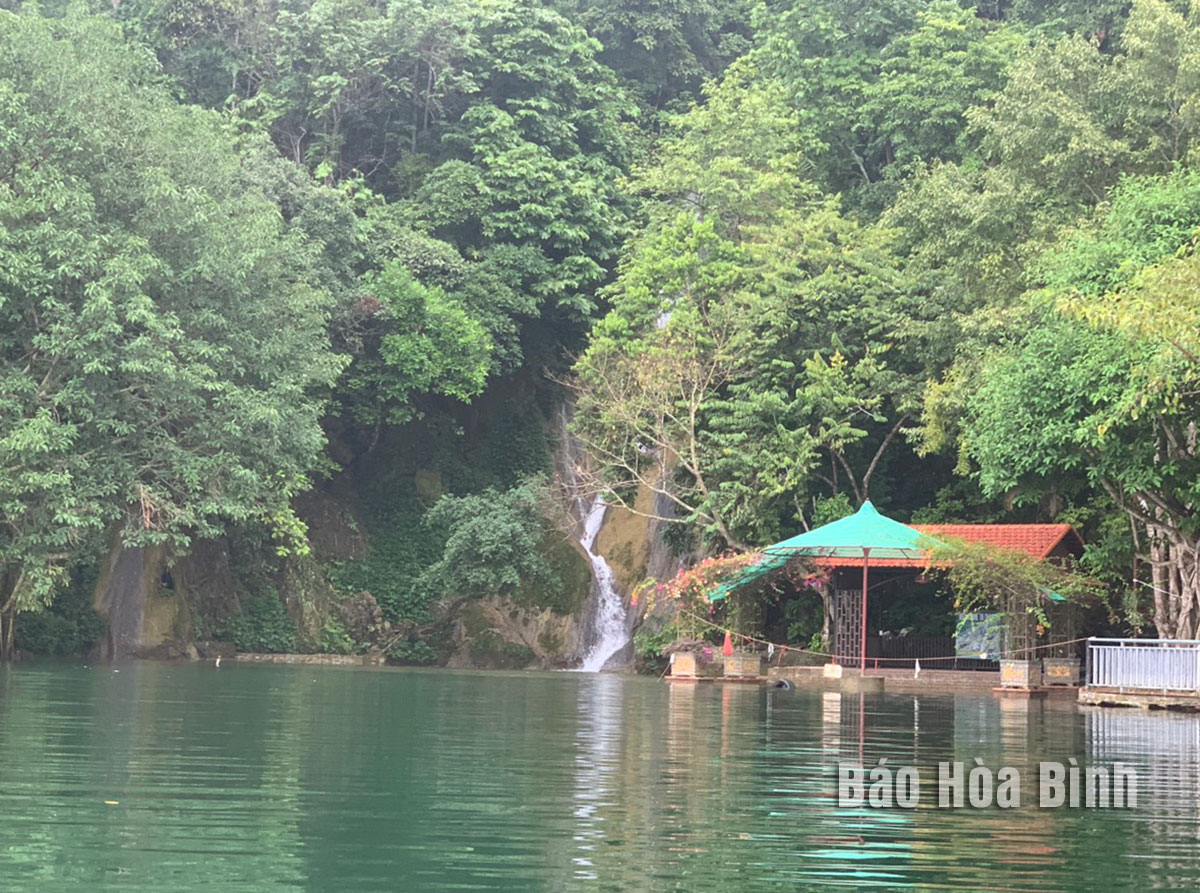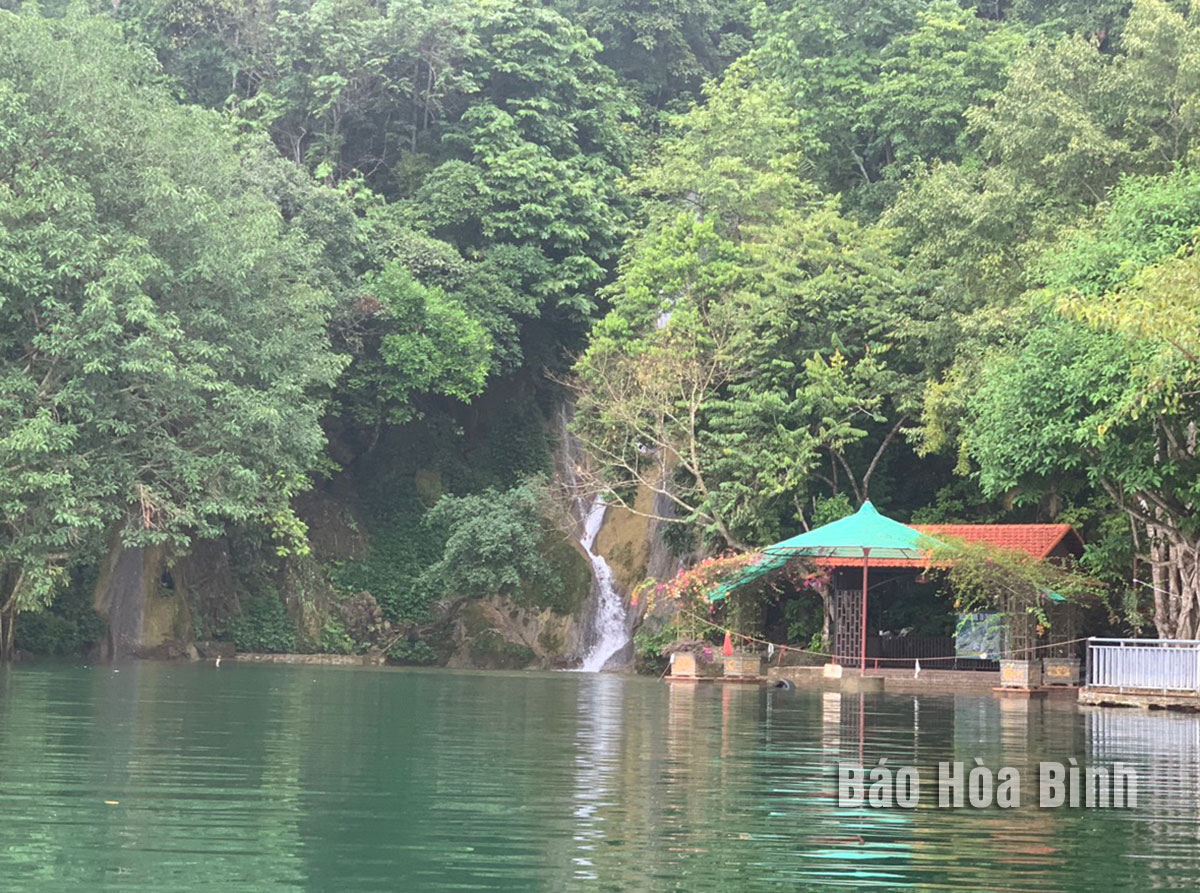
Bich Tru village in Thai Thinh commune, Hoa Binh city, offers visitors a great opportunity to explore a typical Muong village with beautiful landscape, cultural identities and local people’s hospitality.
Some households in Bich Tru village provide homestay services to tap the potential of the locality.
With the construction of the Hoa Binh reservoir, Bich Tru village lost almost all of its arable land. Villagers have shifted to aquaculture and fishing for a living. They have also started tourism to take advantage of the local natural landscapes and traditional culture. Currently, 53 households in the village have 167 fishing cages and four households have engaged in tourism in combination with aquaculture.
It only takes 20 minutes by boat or road to travel from Hoa Binh city’s centre to Bich Tru village. Typical features of Muong village can be found in Bich Tru village, especially stilt houses.
A villager, Bui Van Chuc, said that to protect the forest, his village has long stopped building wooden stilt houses. They switched to building concrete stilt houses which are both solid and airy. In particular, livestock barns are now moved away from the houses to ensure a hygienic environment.
Not only preserving the stilt houses, Bich Tru villagers also keep many customs, which give the village a unique charm.
Women in the village still wear the traditional costumes on holidays and New Year celebrations. In addition, villagers have established a team to practice ancient gong and other traditional songs or dances. They usually perform the songs and dances during holidays and festivals.
Tran Van Doan, head of Bich Tru village, said that local authorities have always urged locals to keep the village clean and green to attract tourists.
Visitors to the village can explore the village by bicycles, climb mountains, go fishing and try local dishes made in Muong style.
Ha Van Thiem, Chairman of the People's Committee of Hoa Binh commune, said that seeing the village’s advantages of natural landscape, the local authority aims to turn Bich Tru into a tourism destination.
The commune has supported households to invest in developing unique tourism products and cooperate with villages of Da Bac district to create attractive tourist routes in the Hoa Binh Hydropower Plant’s reservoir area.
Located just a 20-minute drive from Hoa Binh City, Ora Hill Farmstay & Glamping Hoa Binh is a captivating new destination nestled in Mo hamlet, Bình Thanh commune, Cao Phong district. Combining farming with leisure, this tranquil retreat is perfect for those seeking balance, joy, and an immersive experience in the expansive beauty of nature.
Muong Bi - Tan Lac is renowned as one of the four famous Muong regions in Hoa Binh province. Blessed by nature with a favourable climate and stunning landscapes, Tan Lac holds great advantages for tourism development. The local tourism industry has made remarkable strides in recent times thanks to the attention and support from the local authorities and sectors.
With its strategic location, well-developed transport network, and diverse soil and climatic conditions, Hoa Binh is emerging as a must-visit destination in Vietnam's northwestern tourism corridor. The province boasts numerous attractions, including the Kim Boi hot springs (Kim Boi district), the Dau Rong cave complex (Cao Phong), the Mai Chau valley (Mai Chau), and the iconic Hoa Binh hydropower plant.
The northern mountainous province of Hoa Binh has been listed among the 71 most beautiful places to visit worldwide by the prestigious US travel magazine Condé Nast Traveller.
Hoa Binh province’s rich natural and cultural resources position it as a prime location for developing community-based tourism (CBT). In recent years, support from central and provincial policies, as well as assistance from non-governmental organisations, have encouraged local ethnic minority and mountainous communities to actively engage in the sector.



